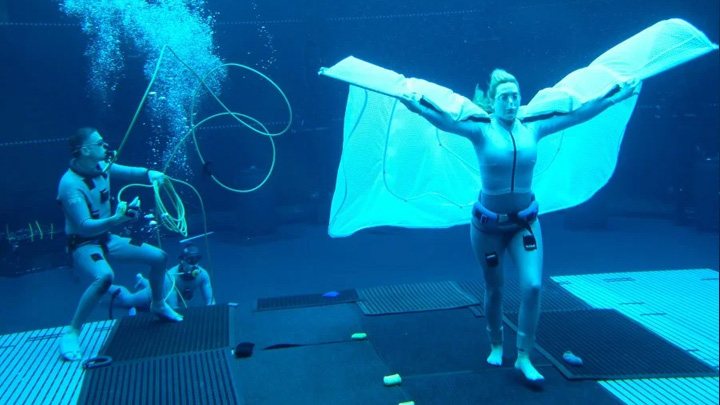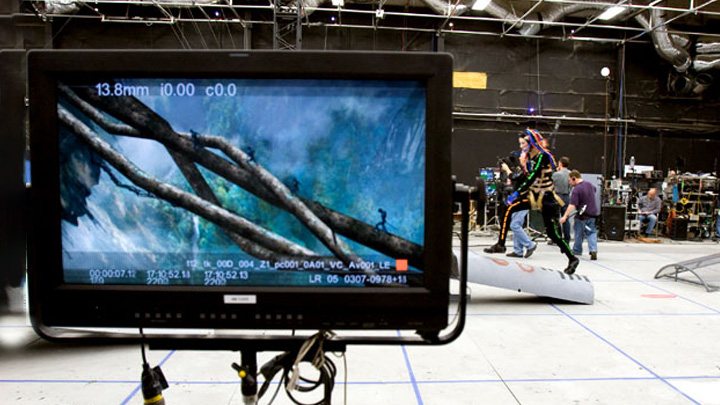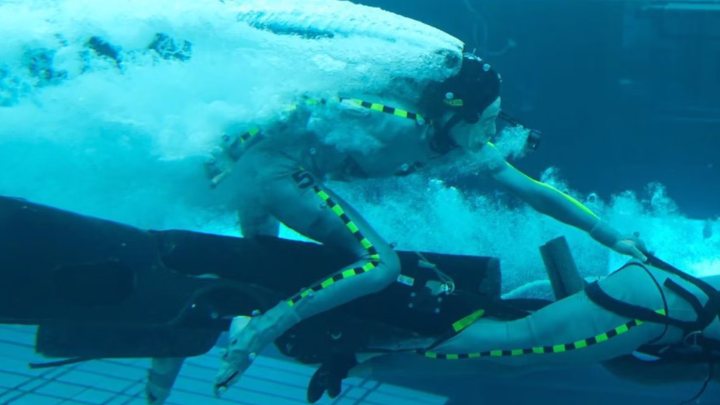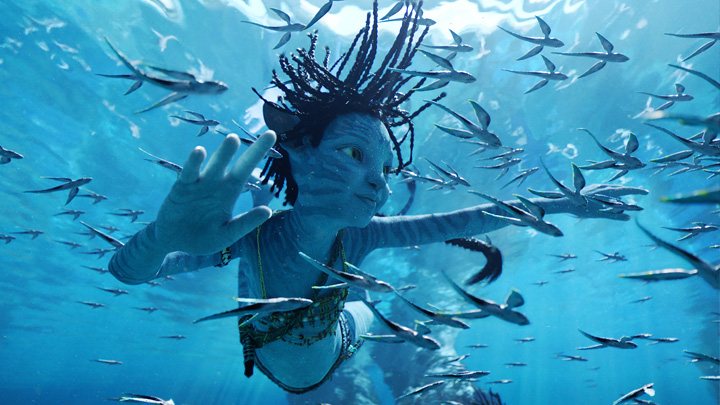![]()
Avatar 2: The Way of Water is indeed a visual treat that takes viewers to an imaginary universe in 3D. Thirteen years ago, the Avatar movie set new standards for astonishing Animation and VFX (Visual Effects), but the newly released sequel raised it even higher. Similar to the previous film, the director expertly integrates 3D to improve audience involvement in the setting and storyline rather than utilising it as an ‘audience-preying’ scheme. Check out detailed case study of Avatar 2 behind the scenes and making of movie.
While the story may be quite ordinary, it is a tremendously immersive experience visually. The brilliance of narrating the story from the Na’vi perspective and the spiritual journey that exhibits the ode to continuity of life which we expect James Cameron to deliver couldn’t go above the mesmerizing visual spectacle. Although the screenplay does have socio-political elements, despite its fantastical setting, that tells about the issues of race, civilization, strong opposition to the military, and environmental preservation.
Regarding visual effects and technology, the first Avatar was revolutionary. The movie became commercially successful ever, the first to earn over $2 billion worldwide, and $700 million domestically and according to early evaluations, The Way of Water is said to set a number of records. As on 23rd January 2023, the box office collection is $2.024 billion. And it is not going to stop. The quality and revenue are worth for all the efforts taken in making of Avatar 2. Anyhow, the Avatar series has indeed operated as a good VFX course for aspiring VFX students.
According to a number of early watchers of the movie, it provides the best theatre experience. Watching Avatar: The Way of Water in IMAX 3D is highly recommended for the most immersive visual experience.
There are many more bewildering Avatar 2 behind the scenes and VFX secrets. Let’s have a peek at some of them.
1. On screen shriek ocean; off screen calm pool
![]()
Cameron’s crew shot the ocean scenes in a tank that was built at Manhattan Beach Studios in California, to bring the underwater sequences to life. More than 250,000 gallons of water which measured 120 feet long by 60 feet wide and 30 feet deep were stored in the tank. The crew was able to capture the actors’ performance including the facial expressions here.
As he stated, “We could do waves breaking on the shore and have people attempting to get out of the ocean while they’re getting battered by waves. We could make the creatures and people surface, get slammed by a 10-foot wave, and struggle to breathe and perform their lines at the same time.”
The ensemble was unable to wear scuba equipment during production since there must not be too many air bubbles visible on camera due to the requirement that the water in the tank should be clear so that the team could properly record the performance.
The system that is attempting to read all the marker dots on the actor’s body in order to capture their motion can’t discern the difference between a marker dot and a bubble, according to Cameron: “Every one of those air bubbles is a little wriggling mirror.” Internet is flooded with the bubble pics of Kate and other actors in the series of making of Avatar 2. As a result, while filming, the cast and crew had to hold their breath!
2. Hold breath underwater

Kate Winslet, along with co-stars Sam Worthington and Zoe Saldana, were able to record lengthy underwater scenes because of their mastery in free diving which they learn during the movie shooting. It was one of the biggest ‘impossible’ thing in making of this amazing sequel.
Astonishingly, Winslet held her breath for more 7 minutes and 15 seconds while performing the lead role of the community of water-dwellers in the movie, breaking the record of Tom Cruise’s six-minute underwater sequence for Mission: Impossible – Rogue Nation in 2015.
Free-diving instructor Chris Denison massively contributed to Avatar: The Way of Water. He had famously coordinated the stunts for the movies Wakanda Forever, Black Panther, and The Line which requires additional underwater filming.
When you consider that, many of the actors in in this movie frequently performed underwater while actually holding their breath for extremely extended periods of time, the scenes took on a new dimension of reality. It has been a huge challenge, but a must thing for acting.
3. 73-year-old as 14-year-old teenager
![]()
One of the popular behind the scene fact about Avatar 2 movie is the 73-year-old Sigourney Weaver playing the role of 14-year-old teenager Kiri. Though this feat was accomplished with the aid of VFX, she successfully brings the expressions and mannerisms of a teenager to the screen. She also had to gone through breath holding techniques and motion capture technology to give full justice to her role.
Na’vi Kiri is the child of the scientist Dr. Grace Augustine played by Sigourney Weaver who got killed in the first film. James Cameron wanted Weaver to return to Pandora for the sequel in a considerably younger role. She took acting lessons for this character at New York’s La Guardia High School of Music & Art and Performing Arts. It is all because of James Cameron who said he was confident that she can pull off this role of a teenager.
It is like bringing back life to the dead character via CGI. It is not a first time in Hollywood. Paul Walker CGI in Furious 7 is one of the best. Some of the other notable are Brandon Lee (The Crow), Jeff Bridges (TRON: Legacy), Bruce Lee (Johnnie Walker Commercial) and Larry Hagman (Dallas Season 2).
4. Virtual Filming (whole acting scenes shot inside four walls)

James Cameron’s Avatar was the first movie to make an effort on the same scale to build a world that was so photorealistic. In Cameron’s words, the movie will be “a true hybrid – a full live-action shot, with CG characters in CG and live environments”. Virtual Production used in this sequel is at par with the current technology. It is one of the best chapters of Avatar 2 behind the scenes.
Cameron collaborated with Lord of the Rings director Peter Jackson, Wētā FX (earlier named as Weta Digital), a pioneer in the field of digital effects, to accomplish this. Nothing short of a new method of filmmaking was created by their collective effort thereby providing new realms of study to the upcoming VFX artists sprouting out from the VFX Academy. Cameron’s crew constructed a motion capture stage that was larger than anything Wētā had ever utilised in order to offer performers more flexibility to explore the environment. The studio has contributed a lot in the making of Avatar 2.
The remaining scenes were filmed on a motion capture stage with performers donning outfits that had markers that bounced infrared light at still cameras. 120 of these cameras were positioned all over the stage during the filming of Avatar in order to record every nuance of an actor’s movement.
In total, Wētā FX has produced 1,800 visual effects shots with intricate CG environments and over 800 computer-generated figures.
5. Advanced Motion Capture Technology exclusive for this movie

The underwater motion capture technique used in Avatar 2’s numerous underwater sequences was developed by Cameron and his business firm Lightstorm Entertainment. The 2009 movie has made history in addition to being a commercial and critical success due to its innovative use of motion capture and computer graphics.
James Cameron, the filmmaker of Avatar 2, has created and used innovative technologies once more with the aid of highly talented technicians who are skilled by reputed VFX institutes.
In the past, performers had to be suspended using cables for underwater motion capture in order to capture their facial expressions and other significant movements. But, it was not looking real. So, James and his team innovated an unique underwater mo-cap. As promised earlier, he has pushed the boundaries of filmmaking in this sequel on the next level. Such tech was not available, so James literally re-invent the wheel to make live his vision of this movie. The underwater sequences are captured in a 9,00,000 gallon tank which mimics the actual ocean environment. Many of scuba certified trainers helped the movie actors to perform in this tank. To achieve complex shots, dance and gymnastics professionals were also hired.
These visuals are giving a whole new cinematic experience to the audience. With surpassing all the challenges, the actors gave real emotions which is one of the main essence of the movie.
6. Underwater Camera Technique

The movie developed the performance capture technology created for the first “Avatar” and used it for the first time underwater. For Cameron to edit in post-production, where he would select his angles and compositions using a virtual camera, required hundreds of cameras and markers documenting every aspect of the actors’ expressions and actions. However, the director insisted on having a real cameraman and actual cameras in the tank with the actors so that they would have a foundation of reality to work from as they rode and fought on mock-ups of various sea creatures.
On top of the bubbles of dive equipment interfering with the markers on the actors’ bodies, the director and his team struggled with capturing performance underwater. Since the actors would be practicing long breath holds in order to perform underwater, Zuccarini said, “Well, if the actors are doing breath holds, why don’t we hold breath with them and avoid the limitations of technology? For the impeccable filming, the crew put together a group of expert freediving cameramen.
This made it possible for them to film the action from inside the tank through windows rather than using his 180-pound 3D Sony Venice camera, which was designed especially for The Way of Water. Zuccarini says, “You can’t snap an angle through windows adequately because of refraction; a camera under the water has far superior optics.”
It presented them with difficulties and restrictions to film with such a massive rig, which was essentially two Venices in a box shooting through a beam-splitter.
Cameron once said that the intention was to make sure “the audience has no idea what they’re looking at the end of the day.” Apparently, the audience reaction and critic reviews are so vociferous that it proves he succeeded in this intended mission.
